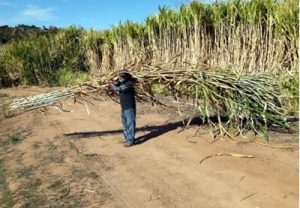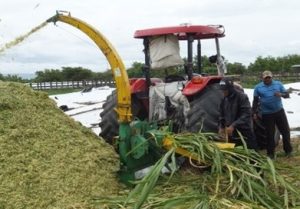The ambitious ethanol blending programme may face adversity during the current Ethanol Supply Year (ESY) 2023-24. Due to lower sugarcane production during the year, the government in December has restricted the use of sugarcane juice and other process intermediates for ethanol production, while the supply of surplus rice from FCI has already been stopped since July 2023.
According to Niti Aayog, about 698 crore liters of ethanol are required for 15% blending during the current Ethanol Supply Year, but as per the latest information, blending at 11.67% has been achieved so far. For the next sugar season 2024-25, the expected sugarcane estimates are also not very encouraging, and also diverting sugar for ethanol production to meet the 20% blending, requirement of about 1098 crore liters of ethanol for ESY 2025-26 will remain challenging.
Addressing the appropriate feedstock required in the future to meet the set targets, Prof. Narendra Mohan, former Director of the National Sugar Institute, said, “Due to this and growing debate on Food vs Fuel, use of starch and sugar from rice and sugarcane which are basically human-food, for ethanol production may take a back seat to mitigate the problem of food crisis. Therefore, lignocellulosic biomass which is abundant and low on production cost obtained from nonfood sources may be considered as an appropriate feedstock for ethanol and Compressed Biogas (CBG) production to meet the future targets. Therefore, in addition to bagasse and other cellulosic agro waste, the plants with the fast growing rate such as grasses or shrubs may become the appropriate energy crops for the future. These plants are perennial crops considered suitable as feedstock for 2G ethanol and CBG production because of high yields, low costs, fit for infertile land, and less environmental impacts.

Napier Grass
Grasses, in particular, to become potential energy crops because of high productivity per hectare, lower cost, abundancy, availability, and utilization of the whole plants. Studies on ethanol and compressed biogas production from such grasses have already been performed in switch grass, napier grass and sweet sorghum and few progressive groups in the country are in the process of establishing pilot & commercial scale plants using such raw material.”
However, there would be need for continuous working on the area of developing low cost technology so as to have bioenergy at affordable and competitive cost.

Mechanical harvesting of Napier Grass













It’s great thing.
Where can I get details of plant and machinery suppliers for Napier grass based bio ethenol plant suppliers?
I want to set up mini plant of 2 klpd based on my own captive napier grass from own 38 acres land.
Pl furnish the details.